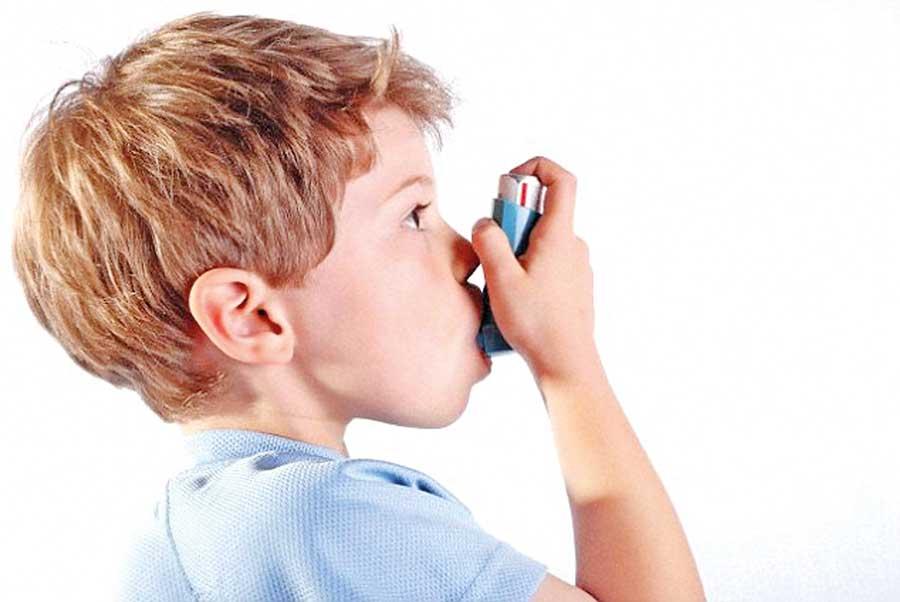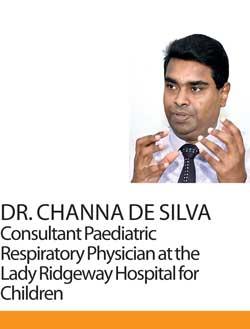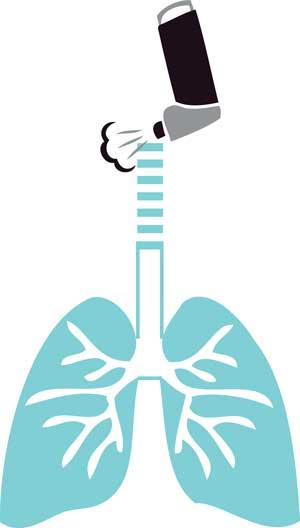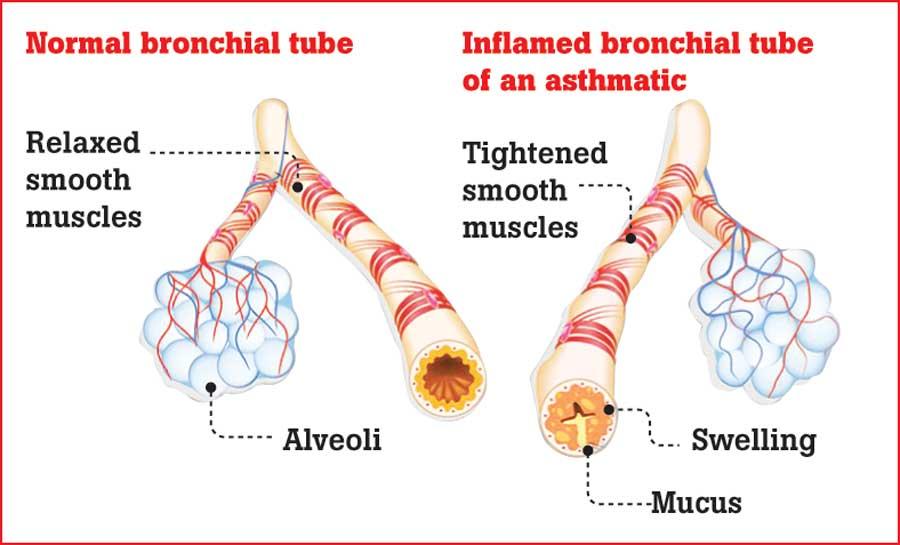27 Sep 2019 - {{hitsCtrl.values.hits}}

 According to the WHO, asthma is a major non-communicable disease characterised by recurrent attacks of breathlessness and wheezing. The severity and frequency of the attacks vary from person to person. The prevalence of asthma in a country is not based on the level of development. However, most asthma related deaths occur in low income and lower middle income countries. It is an under-diagnosed and under treated disease, that can be fatal if appropriate treatment is not taken. Asthma has been identified as the most common chronic disease among children. The WHO estimates that around 235 million people suffer from asthma. While the fundamental causes and categories of asthma have not been well understood, it can be treated and managed through medication and by avoiding asthma triggers.
According to the WHO, asthma is a major non-communicable disease characterised by recurrent attacks of breathlessness and wheezing. The severity and frequency of the attacks vary from person to person. The prevalence of asthma in a country is not based on the level of development. However, most asthma related deaths occur in low income and lower middle income countries. It is an under-diagnosed and under treated disease, that can be fatal if appropriate treatment is not taken. Asthma has been identified as the most common chronic disease among children. The WHO estimates that around 235 million people suffer from asthma. While the fundamental causes and categories of asthma have not been well understood, it can be treated and managed through medication and by avoiding asthma triggers.
Consultant Paediatric Respiratory Physician at the Lady Ridgeway Hospital for Children, Dr. Channa de Silva, spoke to the Daily Mirror on the prevalence of asthma in children in Sri Lanka and the importance of medical treatment.
Dr. de Silva stated, that only isolated studies on the prevalence of asthma have been conducted in the country. A more comprehensive study was conducted in 2003. This study showed, that around 20 to 25 percent of children experience symptoms of wheezing at least once in their lifetime. Ten percent of the children experience symptoms of asthma, which requires treatment. The Doctor revealed that asthma has been on a rise worldwide and there is a possible increase in Sri Lanka due to the rapid industrialisation and changes in the lifestyle of people.
How does it develop?
The strongest risk factors in developing asthma is a genetic predisposition, combined with environmental exposure to certain substances that can irritate the airways. “If parents or close relatives have the disease, there is a high chance the children can also have the disease. This can be worsened through environmental pollutants. This would vary according to the child,” said the Doctor. Factors such as house dust mites, cockroaches, the fur of animals, pollen, smoke, air pollution and physical exercise are among the identified triggers of an asthma attack.
During an asthma attack, the lining of the bronchial tubes swell, causing the air ways to narrow, increasing the resistance to air flowing into and out of the lungs. This leads to difficulty in breathing.
Main features of an asthma attack
In general, respiratory diseases share similar features with each other. Dr. de Silva identified four clinical symptoms that are more prevalent in children who suffer from asthma.
The frequency of symptoms varies according to the person and can occur several times a day or week. The severity of these symptoms and triggers aggravating the attack differs from person to person. “While it can be resolved through medication, it can develop over and over again due to its recurrent nature,” said the Doctor.
Treatment and management 
There are primarily two aspects that doctors focus on when treating asthma. The first step, is to treat the acute symptoms and the second step, is a long term treatment to prevent further attacks. The Doctor identified the second step as being very important. “No medication can completely cure asthma. It can be fully controlled, but it requires long term management.” He said, that symptoms experienced during the acute phase are treated through medication, nebulisation and in extremely severe instances, through injections. The duration of the treatment for long term management depends on the child. “It can last from a few months to a few years. The aim is to ensure it is under control until it is naturally resolved. It is generally resolved as the child grows and only a few would continue experiencing these attacks into adulthood. Treatment is essential to control asthma.” The Doctor revealed that they follow the process of assessing, adjusting and reviewing when treating patients with asthma.
Medication
An inhaler, of which there are two types, is used as treatment during an attack and as a preventive measure for long term use. The Doctor stated that parents are often unwilling to use the inhaler on their child, fearing the child’s dependency on it.
He stressed on the importance of using the inhaler as a method of treatment, asserting that it is both safe and a better option than other medication. “The aim is to directly administer the medicine to the lungs. It uses only a small dosage, carries minimal risk and is efficacious and rapid in its treatment and prevention of an asthma attack.” If untreated, the development of the lungs would be impaired and the function of the lungs would reduce as adults, making them more susceptible to other respiratory diseases.
There are two types of inhalers. One is used as an immediate relief and the other as a preventive measure. “The inhaler used to relieve immediate symptoms is used as required, when the symptoms develop. The other inhaler which uses steroids, regulates and controls the inflammation. Both these inhalers should be used according to medical advice,” the Doctor said, adding, that a gradual reduction of the medication is possible (it should not be abrupt), if there are no symptoms for at least three months. Although this is a lengthy process, the treatment is necessary to treat the inflammation.
Discussing the use of a proper technique when using the inhaler, the Doctor stated, that as only 20 percent of the drug reaches the lungs, using the right technique is important. He further revealed, that as children struggle to use the inhaler directly, a spacer, which is a ‘chamber that holds the medication’ is used to help them. “With children the aim is to prescribe medication in such a way that while it treats asthma, it also allows them to enjoy a normal life, with no restrictions on food and daily activities,” he emphasised. Whereas with adults certain activities, such as smoking should be restricted.

What can be done to prevent asthma attacks?
It is difficult to prevent asthma before it develops as it can be genetically passed down, but the exacerbation of asthma attacks can be prevented through medication. “Physical activity, such as swimming, can induce some sort of lung growth that can help overcome this condition.
There are also specifically designed breathing exercises.” With proper medication and adherence to medical advice, asthma can be fully controlled. More than 90% of the time, it is possible for children to naturally heal from this disease.
Pic by Kushan Pathiraja
26 Apr 2024 18 minute ago
26 Apr 2024 27 minute ago
26 Apr 2024 2 hours ago
26 Apr 2024 3 hours ago
26 Apr 2024 4 hours ago